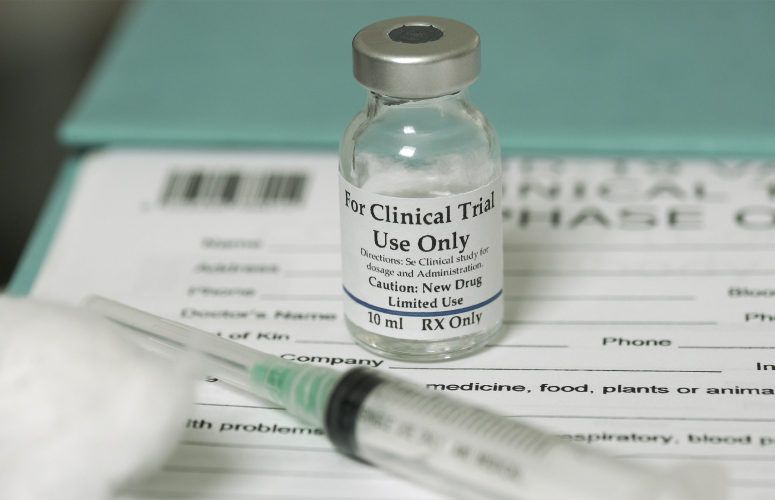
Emergency Department Developments
As the coronavirus pandemic transforms hospital emergency departments, new technologies have emerged to treat a wide range of acute medical conditions.
By George N. Saliba, Contributing Writer On Dec 8, 2021New Jersey’s 72 acute care hospitals and their emergency departments (EDs) have confronted the coronavirus pandemic’s many challenges in part by protecting patients and staff with improved air quality management and other infection control protocols, and by enhancing communication among team members. One ED physician tells New Jersey Business that effective communication was the biggest lesson learned during the pandemic, adding: “We would ask each other: ‘What did you experience today? Should we anticoagulate a patient? What should I do with a patient who I don’t want to put on a ventilator?’ … It was wonderful, to the point where we were sending each other videos about how to prone a patient (use a ventilator with the patient face down).” Today, New Jersey’s EDs are not only showcasing and improving techniques for treating severe COVID-19, but they are also increasingly possessing cutting-edge technologies – some of theme borne from the pandemic – for combatting an array of emergency medical conditions.
Air Quality
Regarding widely publicized problems with people waiting at home with chest pains or stroke symptoms rather than rushing to an ED because they fear contracting COVID-19 there, many experts, including authors of a study at Washington State-based Providence St. Joseph Health, note that contracting COVID-19 in emergency rooms is unlikely given hospitals’ safety protocols.
James Baird, D.O., board certified emergency medicine physician and director of the emergency medicine residency program at Inspira Medical Centers Mullica Hill, cites one precaution meant to thwart SARS-CoV-2’s aerosolized abilities: “When you see the patient’s stretcher, right above them is a big vent. Normally, it would blow cold air in. [Now] the air is just going out, and you can feel [the air going out] to a degree.”
A larger air quality management system was already a design component of Inspira Medical Center Mullica Hill when the state-of-the-art, 465,000-square-foot facility opened in December 2019; the entire building is specifically designed to remove interior air via negative pressure and introduce fresh air in both patient rooms and hallways as a means of reducing airborne pathogens.
Also combatting COVID-19’s spread in emergency departments is technology such as Spectralink phones, which allow medical staff to speak with patients and monitor their vital signs from socially distanced areas. The phones can additionally indicate, for example, how patients respond to medications.
Baird says, “We began trying to communicate to the patients we serve that our [ED] is a very safe place to come for your care. The reason we did that was because people stopped coming to the ER for a while. … Every ER in the area was kind of a deserted place.”
He adds, “We were getting patients who had a stroke or a heart attack, and then we were dealing with the sequela of that, as opposed to actively treating an ongoing stroke or heart attack.”
Underscoring Baird’s point is Centers for Disease Control and Prevention (CDC) data confirming that “between March 29–April 25, 2020, ED visits in the US declined by 42% after the declaration of a national emergency for COVID-19 on March 13, 2020. Among children aged ≤10 years, ED visits declined by 72% compared with prepandemic levels.”
Select Medical Technology
Acute trauma resulting from accidents and other scenarios, however, leaves no stay-at-home options even for ED-adverse people, and Morristown Medical Center – a Level I trauma center – annually receives more than 400 patients via helicopter.
Describing the institution’s large emergency department, Trish O’Keefe, PhD, RN, president of Morristown Medical Center, senior vice president of the Atlantic Health System, and chief nurse executive, Atlantic Health System, says her ED sees more than 100,000 patients each year, and that 10% growth has been projected annually for the coming years. The hospital announced it will expand and modernize its ED beginning in early 2022.
Meanwhile, O’Keefe showcases the importance of the ED’s cutting-edge CT scanners and associated rapid diagnoses, and, separately, how advances in medicine mean that sepsis can now be immediately identified and treated in the ED.
And at some hospitals, the Viz.ai Intelligent Care Coordination Platform leverages artificial intelligence to treat stroke patients: When patients have CT scans and bloodwork, this data is uploaded to a HIPAA-compliant smart phone application that enables neurologists and neurosurgeons to evaluate and treat the patients.
Inspira Health’s Baird says, “This artificial intelligence can actually identify where the stroke is happening, so it helps the whole team get involved, and it’s been something we implemented during [the pandemic]. We’re probably trying to figure out how we can use it more, from here on out. It’s just been amazingly efficient and easy to use.” Baird adds that the latest generation of CT scanners are themselves extraordinarily rapid, yielding brain images both with and without contrast, in minutes.
In October 2020, Inspira began using the TWIAGE System, which allows local emergency responders to communicate and coordinate care with those waiting to receive the patient in an ED. Using the example of a heart attack, Baird explains, “Before the patient even gets here, they are registered, their EKG gets faxed, we activate the [cardiac catheterization] lab, and streamline that process so that when the patient actually rolls in, the cardiologist and I are there at the same time to start treatment.”
Technology and Psychiatric Care
John D’Angelo, D.O., vice president, chief medical officer, and chairman, department of emergency medicine at Trinitas Regional Medical Center, heralds advances in emergency department telepsychiatry: “Rather than wait for an ambulance to take the patient to another hospital, the psychiatrist can – via telehealth – come to the bedside and have a conversation with the patient regarding their behavioral health needs. Really optimizing those service lines was borne out of [the coronavirus pandemic].”
Morristown Medical Center’s O’Keefe similarly states, “We’ve seen behavioral health needs expanded in all of our communities, even more so after COVID. Part of this is an expanded behavioral health unit in our emergency department to make sure our patients are in the safest, most therapeutic environment.”
COVID-19
Treatment for COVID-19 itself is also evolving, with, for example, monoclonal antibodies producing “early signs of amazing results,” according to Inspira Health’s Baird, who explains that Inspira has a dedicated monoclonal antibodies infusion center for which qualified emergency room patients can receive infusions.
“Monoclonal antibodies are laboratory cloned proteins derived from patients who have convalesced from COVID,” adds Trinitas’ D’Angelo. “We take the best antibodies, those most specific for the ‘spike protein’ of the virus, and clone them. The infusion is given to a patient via an intravenous infusion, similar to what would look like a small bag of fluids. As the drug is infused over a course of one hour, the monoclonal antibodies recognize the COVID virus as foreign and begin to attack it.”
He adds, “Patients who do not meet hospital admission criteria, namely patients who do not require supplemental oxygen to keep their oxygen at a safe level, may be offered two different types of monoclonal antibodies. However, the key is early evaluation and medical attention, as opposed to sticking it out at home, especially for those patients with other medical conditions.”
The results have been astounding, according to D’Angelo. “To date, we have an 87.5% success rate of keeping our patients out of the hospital. Approximately 12.5% have returned to then be discharged a few days later. We have had zero deaths after this drug has been administered.”
Conclusion
If there is a recurring theme at the intersection of the pandemic and EDs, it might be that although hospitals are grappling with well-publicized struggles such medical staffing levels, EDs and the various medical treatments they offer have often been shaped and improved as a byproduct of the coronavirus pandemic.
In what might be cited as yet another example, Inspira Health’s Baird says, “Wearing a mask is a thing that we just do all the time in the hospital, now … I just see us wearing masks and PPE equipment uniformly for the rest of time.”
To access more business news, visit NJB News Now.






